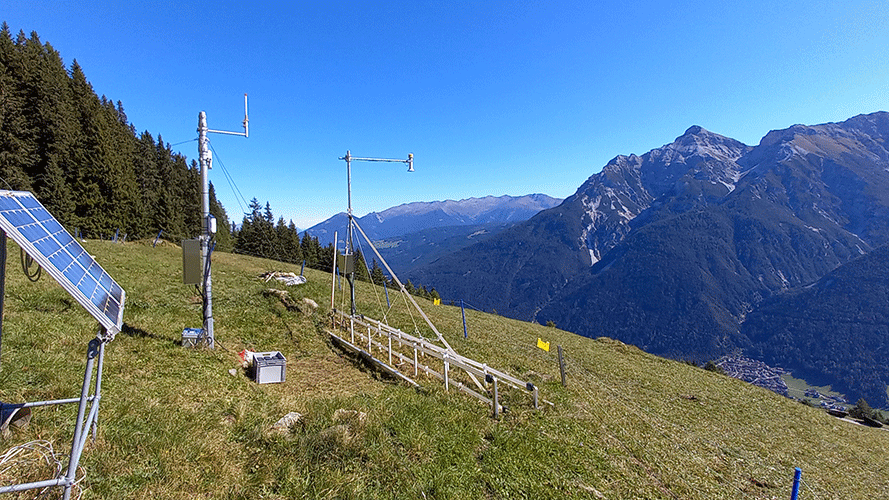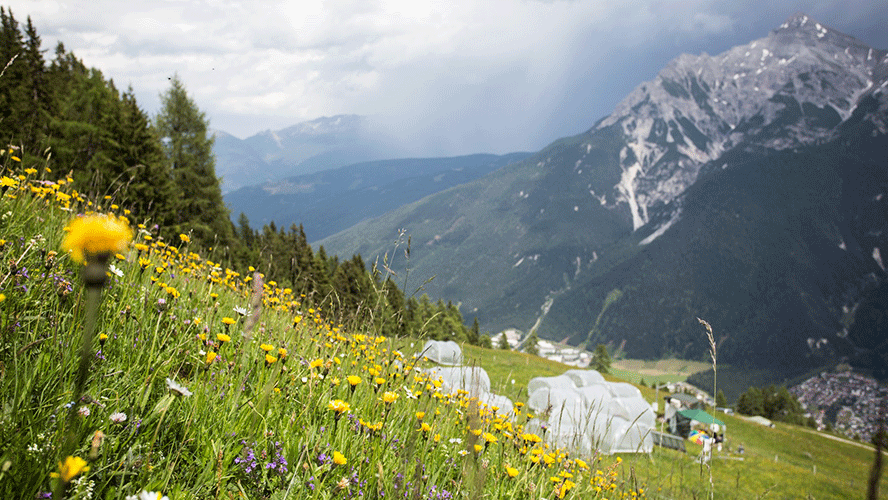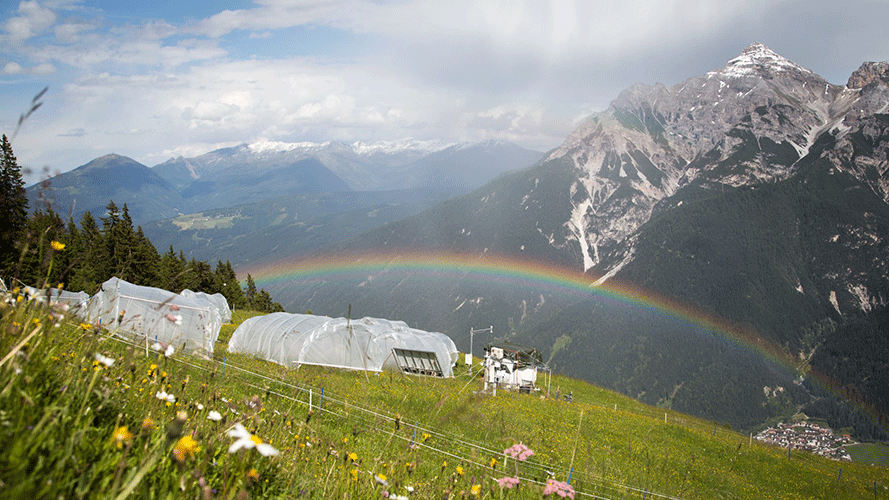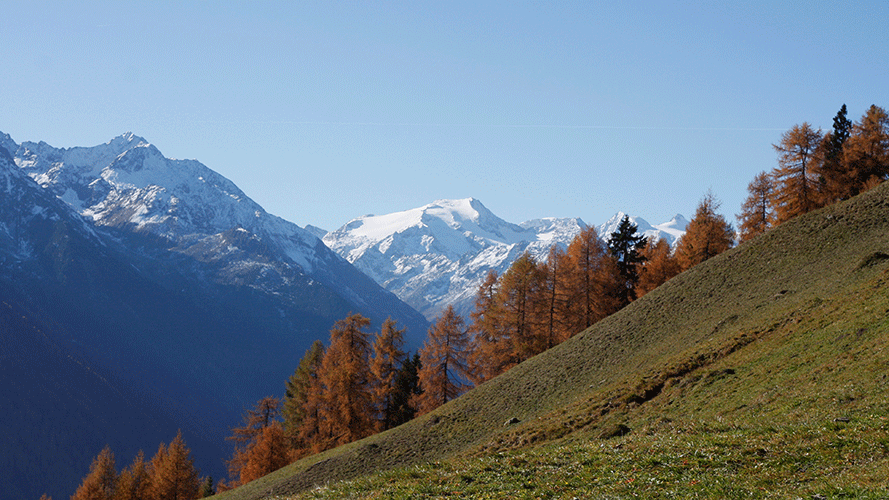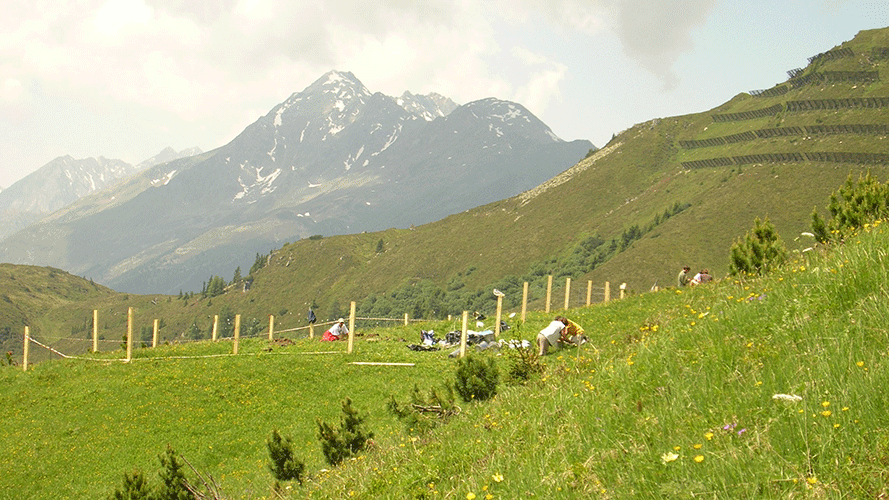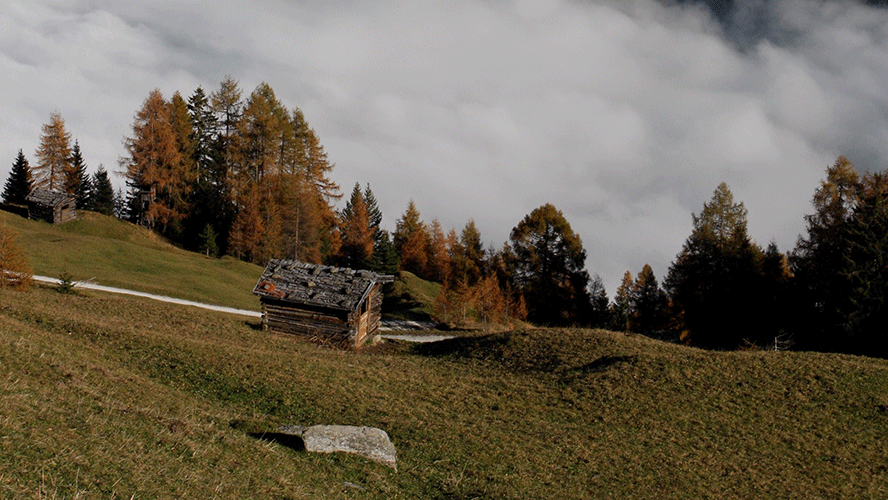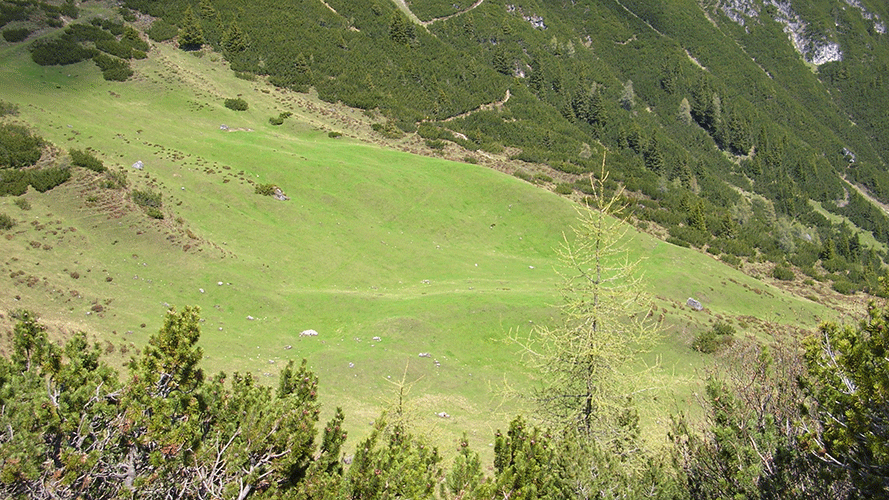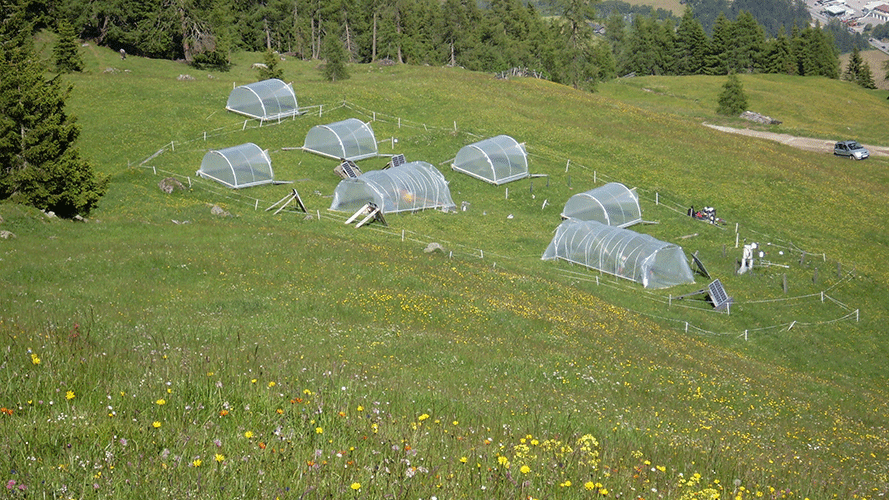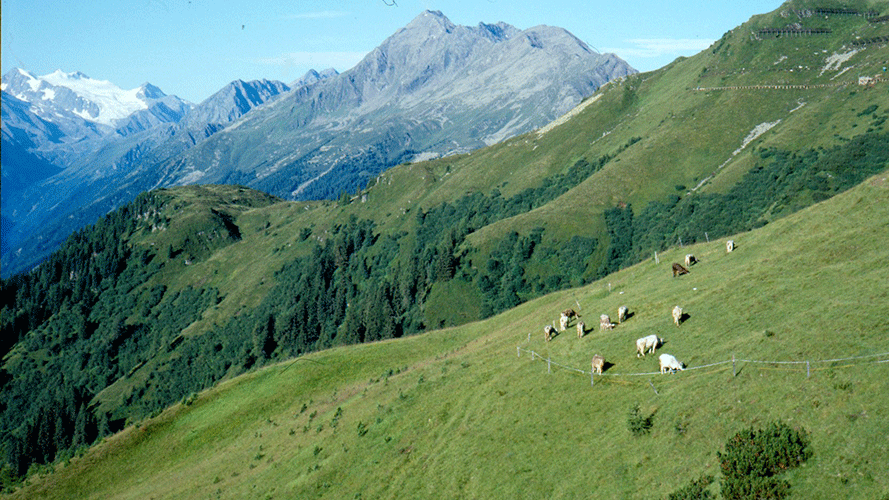Stubai – Kaserstattalm
The research site Stubai-Kaserstattalm is located in the Stubai valley on a southeast exposed slope at an elevation of 1,810 to 1,980 m a.s.l. It includes managed and abandoned hay meadows and pastures as well as subalpine forest. The monitoring stations are powered year-round using solar-power. Research at the site combines long-term monitoring with targeted experiments for understanding the effects of land-use and climate changes (including the impacts of extreme drought and rainfall events) as well as plant traits on ecosystem processes such as productivity, greenhouse gas emissions, nutrient cycling, the water balance and plant-soil-interactions.
The research site Kaserstattalm is part of the LTER mastersite Stubai within the LTSER platform Tyrolean Alps and LTER Austria.
Links
Recent projects
- The Future of Mountain Forests (FWF)
- LTER-CWN: Long-Term Ecosystem Research Infrastructure for Carbon, Water and Nitrogen (FFG)
- ClimLUC: Climate extremes and land-use change: effects on ecosystem processes and services (ÖAW)
- Legacy effects after summer and winter drought: conifer hydraulics at the timberline (FWF)
Recent publications
- Ambrosi, L., Berger, V., Rainer, G. et al. (2024): Spatiotemporal variability of evapotranspiration in Alpine grasslands and its biotic and abiotic drivers. Ecohydrology e2633, https://doi.org/10.1002/eco.2633
- Smith, M.D., Wilkins, K.D., Holdrege, M.C. et al. (2024): Extreme drought impacts have been underestimated in grasslands and shrublands globally. PNAS 121 (4) e2309881120, https://doi.org/10.1073/pnas.2309881120
- Schuchardt, M.A. et al. (2023): Increases in functional diversity of mountain plant communities is mainly driven by species turnover under climate change. Oikos 11: e09922, https://doi.org/10.1111/oik.09922
- SCHUCHARDT, M.A. et al. (2023): Drought erodes mountain plant community resistance to novel species under a warming climate. Arctic, Antarctic, and Alpine Research, https://doi.org/10.1080/15230430.2023.2174282
- NIU, Y., SCHUCHARDT, M.A., VON HESSBERG, A. & JENTSCH, A. (2023): Stable plant community biomass production despite species richness collapse under simulated extreme climate in the European Alps. Science of The Total Environment, 864: 161166, https://doi.org/10.1016/j.scitotenv.2022.161166
- SEEBER, J., STEINWANDTER, M., TASSER, E. et al. (2022): Distribution of soil macrofauna across different habitats in the Eastern European Alps. Sci Data 9, 632, https://doi.org/10.1038/s41597-022-01717-4
- DĺAZ, S., KATTGE, J., CORNELISSEN, J.H.C. et al. (2022): The global spectrum of plant form and function: enhanced species-level trait dataset. Sci Data 9, 755, https://doi.org/10.1038/s41597-022-01774-9
- GRÜNZWEIG, J.M., DE BOECK, H.J., REY, A. et al. (2022): Dryland mechanisms could widely control ecosystem functioning in a drier and warmer world. Nat Ecol Evol 6, 1064–1076, https://doi.org/10.1038/s41559-022-01779-y
- MÜLLER, L.M. & BAHN, M. (2022): Drought legacies and ecosystem responses to subsequent drought. Global Change Biology, https://doi.org/10.1111/gcb.16270
- KRÖEL-DULAY, G., MOJZES, A., SZITÁR, K., BAHN, M. et al (2022): Field experiments underestimate aboveground biomass response to drought. Nat Ecol Evol, https://doi.org/10.1038/s41559-022-01685-3
- SEEBER, J. et al. (2022): Effects of land use and climate on carbon and nitrogen pool partitioning in European mountain grasslands. Science of the Total Environment 822: 153380, https://doi.org/10.1016/j.scitotenv.2022.153380
- FISCHER, A., FELBAUER, L., JANICKE, A., HELFRICHT, K., HOFFMANN, H. & WILD, E.-M. (2022): Glaciers, Climate and People: Holocene Transitions in the Stubai Valley. In: SCHICKHOFF, U., SINGH, R.B. & MAL, S. (eds.): Mountain Landscapes in Transition. Sustainable Development Goals Series. Springer, Cham. https://doi.org/10.1007/978-3-030-70238-0_9
- JOSWIG, J.S., WIRTH, C., […], BAHN, M. et al. (2022): Climatic and soil factors explain the two-dimensional spectrum of global plant trait Variation. Nature Ecology & Evolution 6, 36–50, https://doi.org/10.1038/s41559-021-01616-8
- OBERLEITNER, F., HARTMANN, H., HASIBEDER, R., HUANG, J., LOSSO, A., MAYR, S., OBERHUBER, W., WIESER, G. & BAHN, M. (2022): Amplifying effects of recurrent drought on the dynamics of tree growth and water use in a subalpine forest. Plant, Cell & Environment, 45, 2617–2635. https://doi.org/10.1111/pce.14369
- HARRIS E., DIAZ-PINES E., STOLL E., SCHLOTER M., SCHULZ S., DUFFNER C., LI K., MOORE K.L., INGRISCH J., REINTHALER D., ZECHMEISTER-BOLTENSTERN S., GLATZEL S., BRÜGGEMANN N. & BAHN M. (2021): Denitrifying pathways dominate nitrous oxide emissions from managed grassland during drought and rewetting. Science Advances 7:6, DOI: 10.1126/sciadv.abb7118
- WOHNER C., DIRNBÖCK T., PETERSEIL J., PRÖLL G. & GEIGER S. (2021): Providing high resolution data for the long-term ecosystem research infrastructure on the national and European scale. In: FREITAG U., FUCHS-KITTOWSKI F., ABECKER A., HOSENFELD F. (eds) Umweltinformationssysteme – Wie verändert die Digitalisierung unsere Gesellschaft? Springer Vieweg, Wiesbaden. https://doi.org/10.1007/978-3-658-30889-6_4
- KELLY R., […] BAHN M. et al. (2021): Climatic and evolutionary contexts are required to infer plant life history strategies from functional traits at a global scale. Ecology letters 24 (5): 970–983, https://doi.org/10.1111/ele.13704
- WEILAND S. O., DETCHAROEN M., SCHLICK-STEINER B.C. & STEINER F.M. (2021): No influence of antibiotic on locomotion in Drosophila nigrosparsa after recovery, but influence on microbiome, possibly mediating wing-morphology Change. bioRxiv,
For more publications please visit the bibliography.
